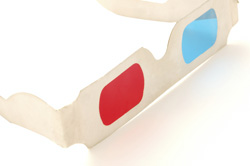Novel holographic antenna designs and uses
Holograms are virtual images resulting from the interference of two electromagnetic (EM) waves. Holographic antennas (HAs) are antennas where the reflecting surface (aperture) is formed by a conductive metallic pattern on a grounded multi-layer dielectric substrate. In order to exploit this interference, surface waves can propagate along the substrate and the hologram is then produced by interference at the air-substrate interface. EU-funded researchers have initiated the ALOHA Torino-Sydney project to investigate prototype HAs in the microwave frequency range of the EM. Holographic capabilities would be imparted by microstrip technology supporting the propagation of surface waves along the interface of two different media. Investigators focused on a width-modulated microstrip line inside single structures called unit cells. A cylindrical geometry was then achieved consisting of periodic repeats of unit cells along different directions and enabling coupling of surface and free space waves leading to interesting EM phenomena. Among the numerous prototypes and designs that have been developed is a prototype device functioning in the microwave K-band of the EM spectrum (18–27 GigaHertz (GHz)) used in satellite communications. Another demonstrator, consisting of 24 active unit cells each independently tuneable and with excellent filter parameters, enabled a huge size reduction and potential for use in advanced applications such as so-called cognitive radios that intelligently and efficiently select wireless communication channels. Researchers have also to date manufactured two different periodic configurations of a multi-layer reflector screen covering the ultra-wide band (UWB) of frequencies (3.1–10.6 GHz) used in radar tracking applications as well as in wireless communications. The enhanced properties suggest tremendous industrial potential. The numerous prototypes manufactured by the ALOHA Torino-Sydney project team demonstrate new and improved capabilities of HAs with potential applications in a variety of established and emerging fields. Continuing research should enable optimisation of the demonstrators as well as development of additional devices.



